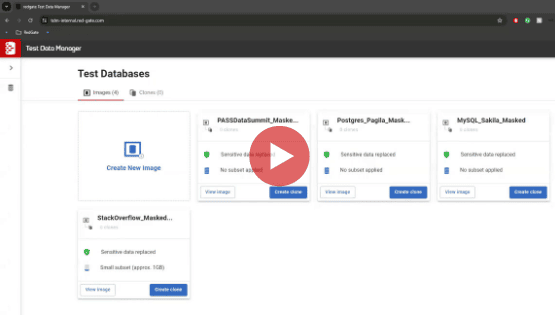Why organisations across Australia should embrace Test Data Management
In an era marked by the convergence of Big Data, hybrid cloud use, and the rise of machine learning and artificial intelligence, organisations across the Asia-Pacific (APAC) region find themselves at a critical juncture. The ability to collect, manage, and leverage data effectively is now a determining factor for competitive advantage – and will become more competitive. IDC’s Global DataSphere Forecast, 2023–2027, estimates that a staggering 129 zettabytes of data was generated in 2023 and will more than double by 2027.
What is Test Data Management (TDM)?
Test Data Management (TDM) allows organisations to test applications in development using real-world data without compromising its integrity or the privacy of personal information. With database development teams now grappling with shortening release cycles and tightening data protection laws, it fulfils the need to deliver realistic and compliant test data to develop quickly and safely.
Any organisation that aims for reliable, ongoing deployments of database changes needs a TDM strategy that allows developers to test database changes early, thoroughly and repeatedly, with the right test data. With the increase in the volume and complexity of that data, having a TDM strategy has become even more critical.
How it helps meet legislative requirements
This business advantages of TDM are only one side of the coin when considering it. The flipside is legislation protecting the handling of personal information about individuals which in Australia is the Privacy Act 1988 (Privacy Act). This includes the collection, use, storage, and disclosure of personal information by Australian Government agencies and organisations with an annual turnover of more than $3 million.
Under the Act are 13 Australian Privacy Principles (APP) that entities must adhere to. APP 11 states that they must take reasonable steps to protect the personal information they hold from misuse, interference and loss, as well as unauthorised access, modification or disclosure.
This further adds to the importance of having a TDM strategy to avoid unnecessary penalties.
Why it’s security best practice
Alongside the legislation is the recognised and often talked about topic of data breaches. The Australian Signals Directorate underscores the critical nature of data security, defining a data breach as the unauthorised access, disclosure, or exposure of sensitive or personal information.
The alarming statistics of 895 breach notifications between July 2022 and June 2023 with detection and escalation costs reaching AUD $1.68 million – the highest portion of breach costs – indicates a shift towards more complex breach investigations. All of this highlights the pressing need for robust TDM strategies to mitigate the financial and reputational fallout of data breaches.
Where ROI comes into the picture
The economic benefits of adopting TDM are multifaceted. Beyond the reduction in the risk of regulatory fines and data breach costs, organisations safeguard their goodwill and market share.
The more tangible economic benefits of TDM lie in the ability to spin up multiple test data instances which take up a fraction of the space of the original database. The cost savings due to virtualisation often pay for the project alone when business cases are put together examining the return on investment of TDM.
And then there are the efficiency, quality control and time savings gained from being able to self-serve individual test environments with truly realistic data to multiple developers in, literally, seconds not hours. This ensures they can work faster and smarter in isolated environments but in tandem with colleagues to ultimately allow for better collaboration.
Anecdotally, this is often the most important advantage development teams gain: they release reliable, robust changes sooner while seeing a lower change failure rate.
Conclusion
Australian organisations stand at the forefront of a data-driven revolution, and embracing Test Data Management is not just a choice but a strategic imperative. TDM not only ensures compliance with regulatory frameworks but also safeguards sensitive information, mitigates financial risks, and drives efficiency in a rapidly evolving technological landscape.
As the volume of data continues to grow, organisations that invest in TDM will be better positioned to thrive, innovate, and secure a competitive advantage in the digital era.
Redgate Test Data Manager is a TDM solution that helps development teams spin up test and development environments, and manage test and development data for databases including Postgres, Oracle, SQL Server and My SQL.
It includes data provisioning via virtualisation, subsetting, data generation, data classification, mapping and data masking capabilities.
If you’re interested in learning more, please get in touch here.
Read next
Blog post
Database subsetting. What it is, what it’s for, and why we’d love to hear from you.
We’re looking into database subsetting, and if you need it or are investigating it, we want to hear from you. Please share your thoughts in the comment section below. What is database subsetting? Database subsetting is creating a copy of a database that contains only a portion of the data, while still being referentially intact.
Blog post
Navigating the risk of sharing database access
With the huge growth in volume and complexity, data management has become a key priority in most Enterprises. But for this data to be utilised in a meaningful way, how do you tackle the added complexity of controlling access across both technical and business departments? Our CPO, David Gummer recently interviewed the CEO of the
Learn More
Redgate Test Data Manager
Improve your release quality and reduce your risk, with the flexibility to fit your workflow.






